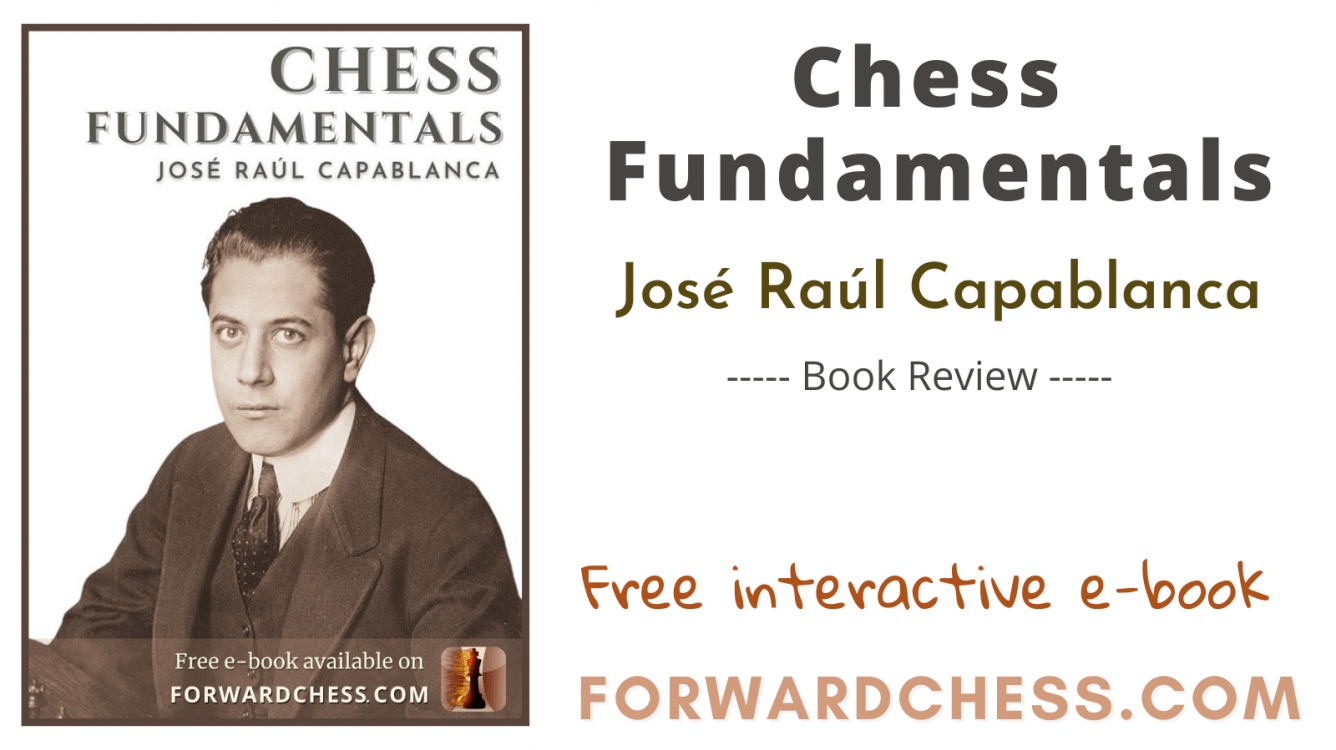
Capablanca's Chess Fundamentals: Revived & Free
At Forward Chess, we have a passion for books. We turn physical books into an interactive learning experience. Recently we converted Chess Fundamentals by Capablanca - a 100-year-old public domain book into a 21st-century digital reading experience.
We are proud of it and we wanted to make it available for the chess community free of cost. We believe that this not only honors the legendary work but will also help support chess players in their personal progress
In this blog, you'll find a review of the book and instructions on how to download/access it on your devices.
Book Review: Chess Fundamentals
“I have known many chess players, but among them there has been only one genius – Capablanca!” – Emanuel Lasker.
Considering the long rivalry between Capablanca and his predecessor as world champion, Lasker’s quote is extremely generous. Many years later, Capablanca’s legacy as the greatest natural chess talent is still assured.
GM John Nunn provides a good summary of Capablanca’s style:
“His natural talent created games of deceptive simplicity… and while it is hard to emulate Capablanca’s style without the gift of immense natural talent, there is a lot to be learnt from his games.”

Apart from being a superb player, Capablanca was also a fine writer, and his writing style had the clarity of “deceptive simplicity” that matched his games. Chess Fundamentals is aimed at players who already know the basic rules of the game, and it was originally published in 1921. While the book is primarily aimed at post-beginners, it can be read for instruction and pleasure by all players. It covers the three main areas of the game, namely openings, middlegames, and endgames.
The book places particular emphasis on general principles, rather than overwhelming the reader with excessive details. Being a product of its time, the book doesn’t have any computer-based analysis, nor does it deal with the latest wrinkle in the Najdorf Sicilian. Instead, it’s a concise treatise on how to deal with basic chess positions and planning. Capablanca emphasizes general endgame principles, pawn play, the relative strengths of the pieces, and the initiative and attack.
The book also includes 14 illustrative games, including six of his losses! According to du Mont, who collaborated with Capablanca on the book, the inclusion of the losses was a reaction to the criticism Capablanca faced for his book My Chess Career, which only included wins. Capablanca is not afraid to admit his mistakes in the lost games, and this adds to the value of the book. The annotations are mostly verbal and do not go into extensive variations. Rather, Capablanca reveals his thoughts and ideas about the critical issues in the games.
An example from the book is given below, with annotations from the book.
In summary, the book is a classic that belongs on everyone’s bookshelf (or electronic device!). Yes, chess knowledge has expanded greatly since Capablanca’s heyday. Opening theory has exploded and we have instant access to more chess information than we know what to do with, but the basic principles of chess haven’t changed.
So, a century after the book was published, it’s fitting to give Capablanca the last word:
“In chess the tactics may change but the strategic fundamental principles are always the same, so that Chess Fundamentals is as good now as it was thirteen years ago. It will be as good a hundred years from now; as long in fact as the laws and rules of the game remain what they are at present.”



